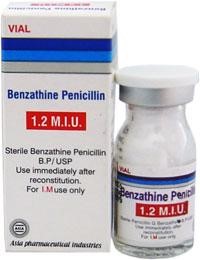A woman hospitalized with severe preeclampsia is being treated with hydralazine to control blood pressure. Which finding would lead the nurse to suspect that the client is having an adverse effect associated with this drug?
Gastrointestinal bleeding
Sweating
Tachycardia
Blurred vision
The Correct Answer is C
Choice A Reason: This is incorrect because gastrointestinal bleeding is not an adverse effect of hydralazine, which is a vasodilator that lowers blood pressure by relaxing the smooth muscles of the blood vessels. Gastrointestinal bleeding can be caused by other conditions such as ulcers, gastritis, or hemorrhoids.
Choice B Reason: This is incorrect because sweating is not an adverse effect of hydralazine, but a normal response to vasodilation and heat loss. Sweating can also be caused by other factors such as fever, anxiety, or exercise.
Choice C Reason: This is correct because tachycardia is an adverse effect of hydralazine, which can occur as a reflex response to vasodilation and hypotension. Tachycardia can increase the cardiac workload and oxygen demand, which can be harmful for pregnant women with preeclampsia who already have impaired placental perfusion and fetal hypoxia.
Choice D Reason: This is incorrect because blurred vision is not an adverse effect of hydralazine, but a symptom of severe preeclampsia that indicates cerebral edema or ischemia. Blurred vision can also be caused by other conditions such as diabetes, glaucoma, or cataracts.
Nursing Test Bank
Naxlex Comprehensive Predictor Exams
Related Questions
Correct Answer is ["2"]
Explanation
The correct answer is 2 mL. To calculate the volume to administer, the nurse should use the following formula:
Volume (mL) = Dose (units) / Concentration (units/mL)
Plugging in the given values, we get:
Volume (mL) = 1,200,000 units / 600,000 units/mL
Volume (mL) = 2 mL
Rounding to the nearest whole number, we get 2 mL.

Correct Answer is ["A","B","D"]
Explanation
Choice A Reason: This is correct because breast tenderness is a common discomfort during the first trimester of pregnancy. It is caused by hormonal changes that stimulate breast growth and prepare them for lactation. Breast tenderness may also be accompanied by swelling, tingling, or sensitivity.
Choice B Reason: This is correct because urinary frequency is a common discomfort during the first trimester of pregnancy. It is caused by hormonal changes that increase blood flow to the kidneys and bladder, as well as by the growing uterus that puts pressure on the bladder. Urinary frequency may also be associated with increased thirst or urinary tract infections.
Choice C Reason: This is incorrect because backache is not a common discomfort during the first trimester of pregnancy. It usually occurs in later stages of pregnancy, when the weight of the fetus and the uterus shifts the center of gravity and strains the back muscles and ligaments. Backache may also be caused by poor posture, stress, or fatigue.
Choice D Reason: This is correct because cravings are a common discomfort during the first trimester of pregnancy. They are caused by hormonal changes that affect the sense of taste and smell, as well as by emotional or psychological factors. Cravings may vary from person to person and may include foods that are sweet, salty, sour, or spicy.
Choice E Reason: This is incorrect because leg cramps are not a common discomfort during the first trimester of pregnancy. They usually occur in later stages of pregnancy, when there is increased pressure on the nerves and blood vessels that supply the legs. Leg cramps may also be caused by dehydration, electrolyte imbalance, or muscle fatigue.
Whether you are a student looking to ace your exams or a practicing nurse seeking to enhance your expertise , our nursing education contents will empower you with the confidence and competence to make a difference in the lives of patients and become a respected leader in the healthcare field.
Visit Naxlex, invest in your future and unlock endless possibilities with our unparalleled nursing education contents today
Report Wrong Answer on the Current Question
Do you disagree with the answer? If yes, what is your expected answer? Explain.
Kindly be descriptive with the issue you are facing.
